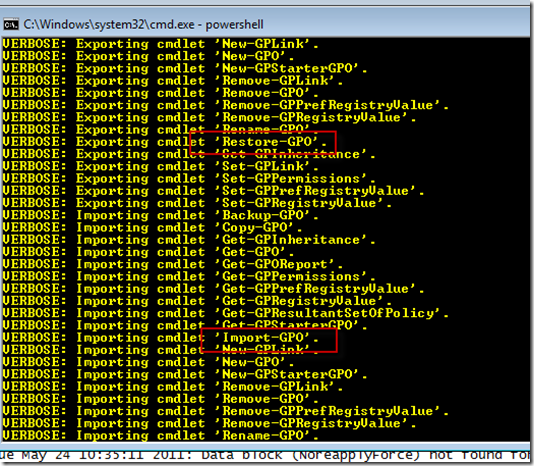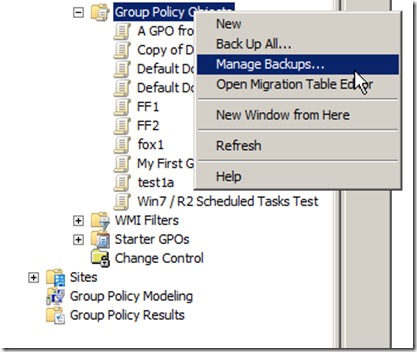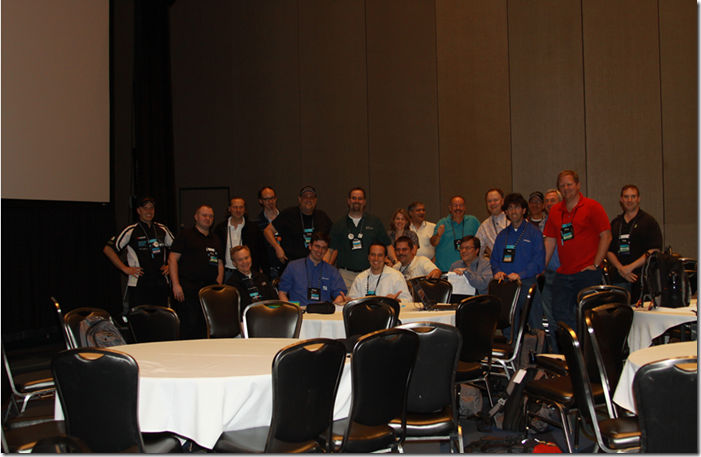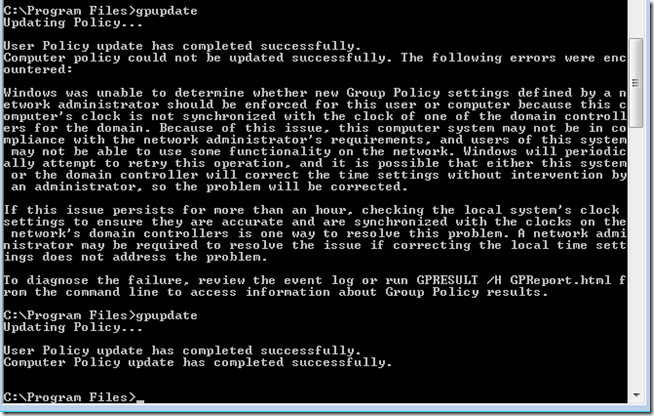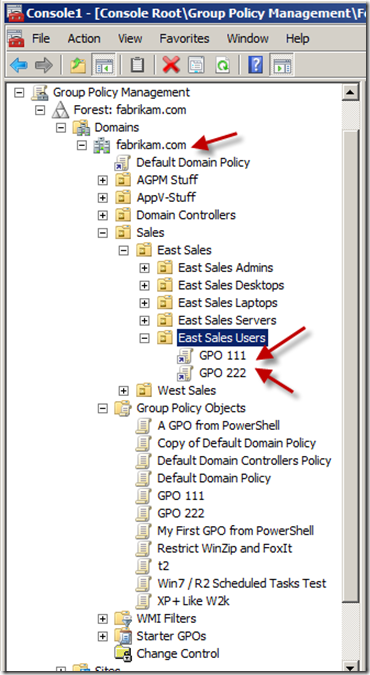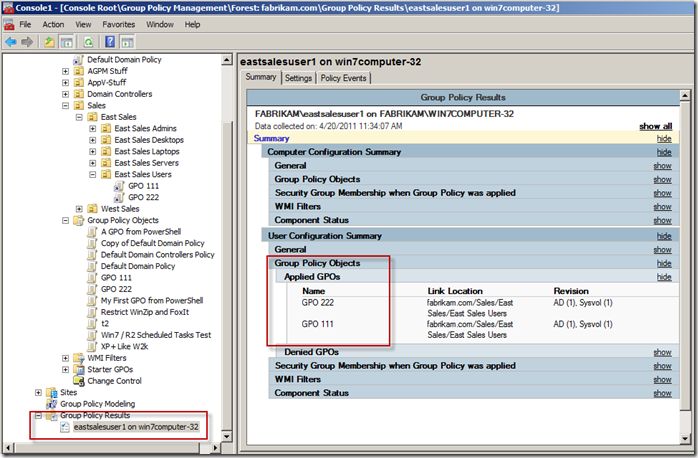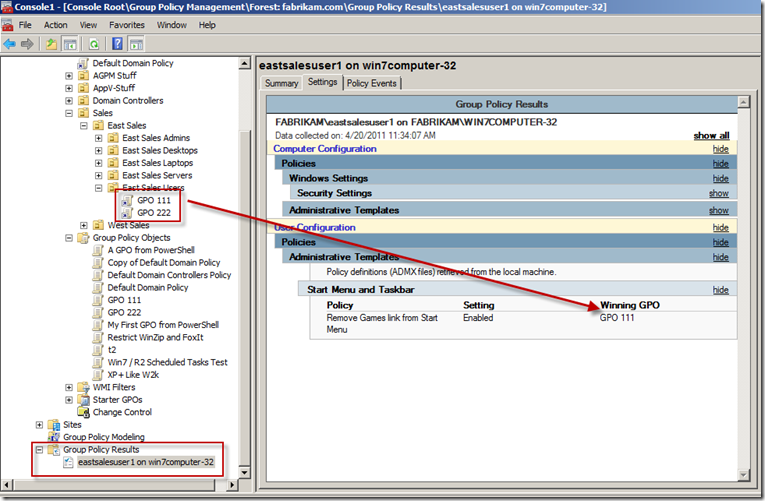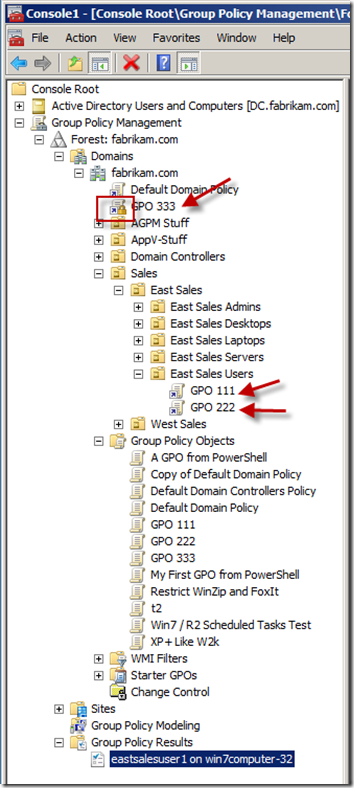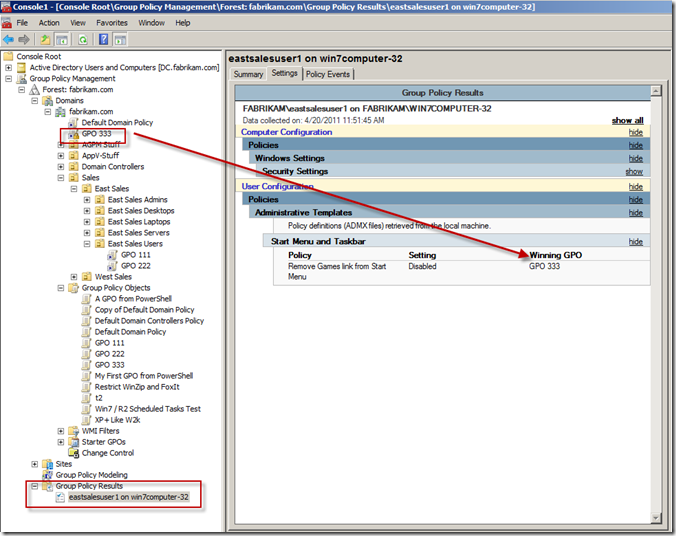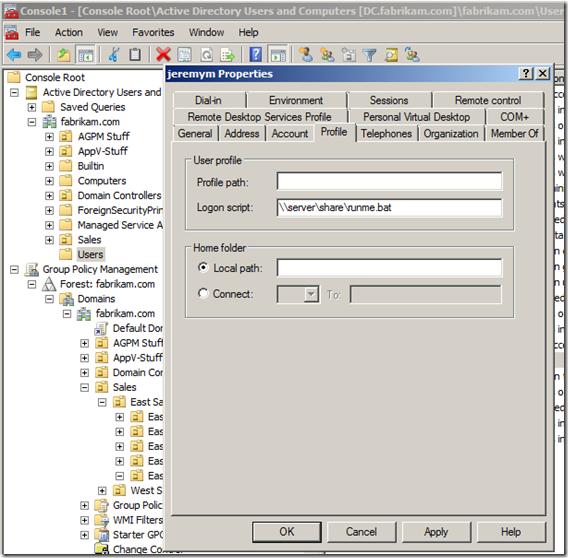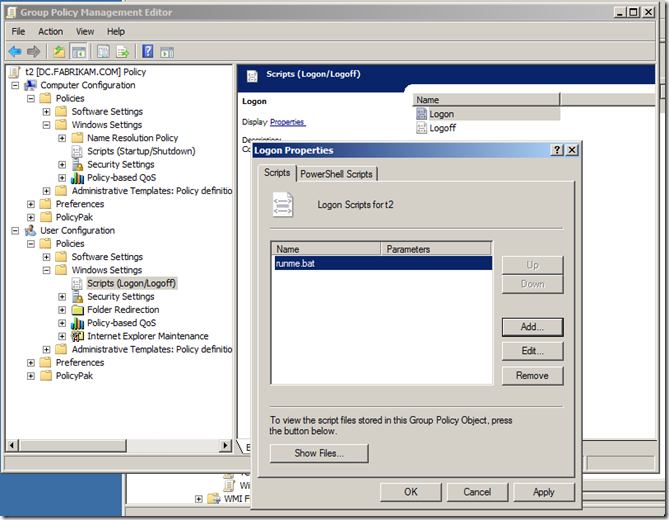Clean Naming for GPOs (Notes from the field): Part II
Team:
I wanted to share with you some of your peers humble suggestions for Group Policy naming. Again, what works for THEM might NOT work for you, but at least it can give you some food for thought.
From Ondrej in Slovakia:
I use names for GPO and I think it’s good way to have them this way:
GPO_RDS_APP_Office2010_v01
- GPO – to make unique name for GPOs
- RDS – name of part of change (Remote Desktop Services)
- APP – managing APPlication (Software Restriction)
- Office2010 – name of application
- V01 – version of GPO
GPO_DisableIPV6_v01
- GPO – to make unique name for GPOs
- DisableIPV6 – short accurate name of changes in GPO
- V01 – version of GPO
I think it’s very good to have versioning of GPO policies. When I change GPO I increase version number and I keep max 2 older GPOs for just history and help to find out changes I made.
From Charl in South Africa
who has 2,000 GPOs !
(edited a little for clarity):
"Here’s what we do:
-If the policy is domain linked, the GPO will start with the name of the domain it’s in; this works very well if you have multiple domains.
– For the GPOs linked to our old servers structure we kept the names as starting with "Servers" and these are slowly being migrated to the new servers OU structure and the names for these GPOs start with NS (New Servers – OK, it’s actually my company’s name that starts with an N, followed by S for servers).
– The OU is "Nxxxx Servers". Next up is the GPOs linked for the XP OUs and they start with XP and similarly the Windows 7 GPOs start with NUW (Again, first letter of my company’s name being an N followed by U and W which stands for Users and Workstations).
– The next part of the name is followed by a dash (-), C and/or U and then another dash (-). This indicates whether the GPO has the Computer, User or both nodes enabled.
– The next part of the name indicates what the function of the GPO is and if there are multiple functions, these are separated by commas (,).
– Lastly, the name ends with a colon (:) followed by the department who ‘owns’
this GPO, i.e. Security, ServerOps, End User Computing, etc. Again, we only have about 5 owners.
So, on a daily basis I use the GPMC scripts to dump all the GPO names into a single file, DTS/SSIS then into SQL and then the fun starts:
– By using the dashes, commas and colons as separators, I can see with a stored procedure, which GPOs do not have owners as there is no colon and one of the owners defined after the colon. Which GPOs do not indicate whether they are Computer, User or both nodes-enabled GPOs.
– I can see which GPOs do not conform to the proper naming convention. It it does not start with a one of the five top-level GPO names, I know immediately that I have a problem.
– Digging a bit further (all automated now!) I can even see who made a GPO and indicated it is a Computer GPO, but the User node is still enabled. The exception reports only run IF something is wrong and the GPO guys from Server Ops know that Big Daddy form Security is watching them.
– For GPOs linked lower down, we use the abbreviations of the child OUs in the GPO name as well just after the top-level name.
So, by looking at a GPO name, I can identify where it is linked, whether is Computer/User/both, function and owner. Here’s an example:
I.e. XP-C-Power management, Screensaver lockdown:SO
I can quickly parse this, and see that the GPO is linked to OU containing XP machines, Computer node enabled, sets power management and screensaver and belongs to Server Ops.
How’s that for being in empowered?"




